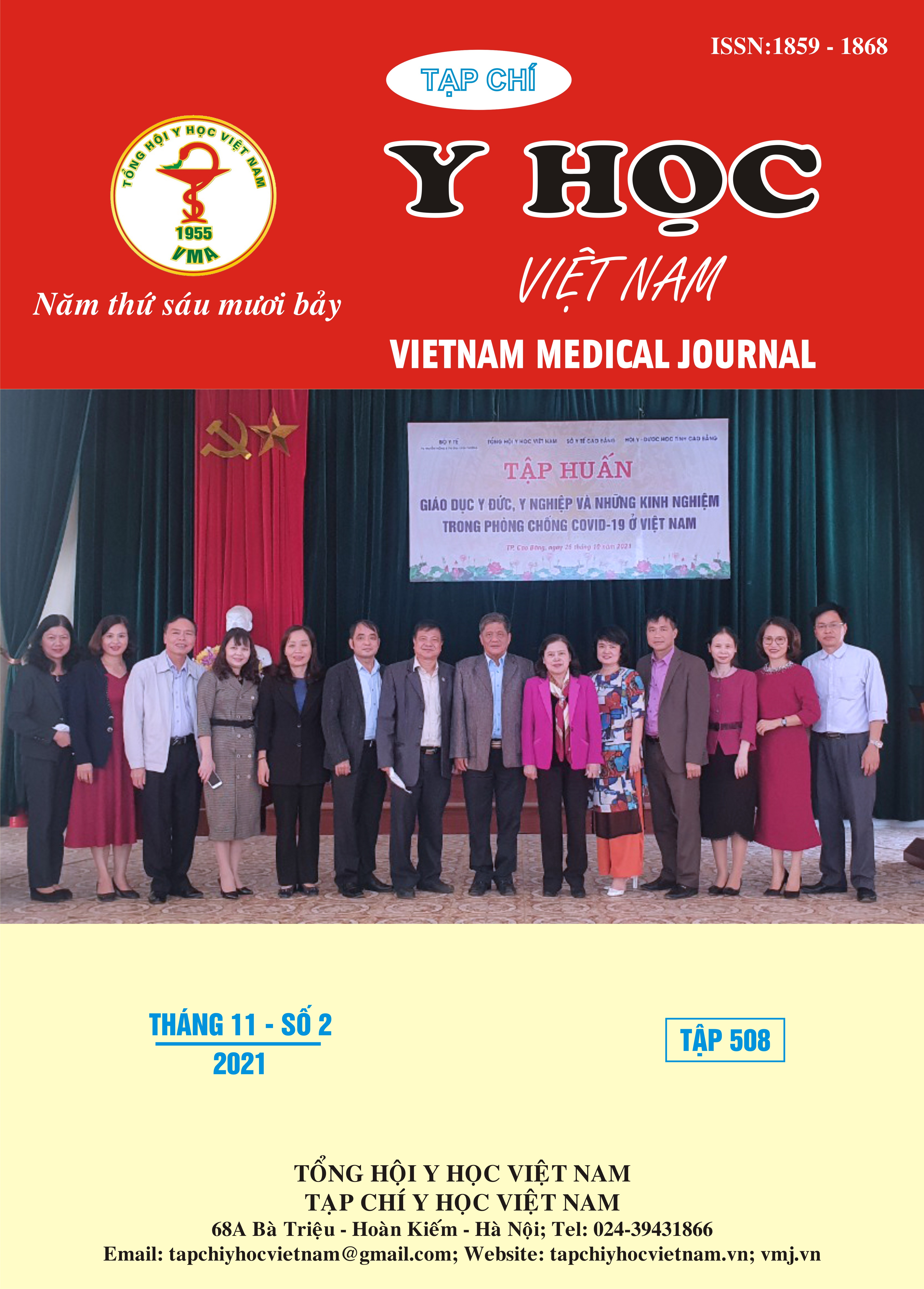CLINICAL FEATURES OF EXCITED DELIRIUM SYNDROME IN ACUTE POISONINGS
Main Article Content
Abstract
Objectives: to describe the clinical characteristics of acute delirium agitation in acute poisoned patients at Vietnam Poison Control Center, Bach Mai Hospital. Methods: A prospective observational study included 48 patients with acute delirium due to acute poisoning at the Poison Control Center from January 2020 to October 2021. Results: most of the study patients were male (72.9%), in the age group of 18-19 years old (64.6%), and unemployed (71.7. %). The rate of severe agitation was 100%. The common symptoms were: not afraid of pain (50%), rapid breathing (97.7%), sweating (70.8%), not following orders (83.3%), increase in muscle strength (81.3%), loss of fatigue (77.1%), increase in body temperature (85.4%), inappropriate clothing (54.6), delusions of harm (54.3%), delusions of jealousy (2.2%), panic attacks of pride (2.3%), no delusions (41.3%), patients have hallucinations 43.8%, hallucinations visual acuity 25.0% without hallucinogenic disorder 31.2%, mean systolic blood pressure was 135.0 ± 10.6, mean heart rate was 120.4 ± 13.9. Conclusion: Agitated delirium syndrome in acute poisoned patients was a clinical emergency with severe agitation, many serious signs such as hyperthermia, increased muscle tone, convulsions, etc. required prompt identified and treated.
Article Details
Keywords
Excited delirium syndrome, acute poisoning
References
2. Gonin P, Beysard N, Yersin B, Carron PN. Excited Delirium: A Systematic Review. Academic Emergency Medicine. 2018;25(5):552-565
3. Wanicki JL, Barrett W, Saghafi O, et al. Prehospital ketamine for excited delirium in the setting of acute drug intoxication. In: Toxicology Clinical. New York, NY: Informa Healthcare, 2014:685–6.
4. Helmer J, Acker J, Deakin J, Johnston T. Canadian paramedic experience with intramuscular ketamine for extreme agitation: A quality improvement initiative. Australasian Journal of Paramedicine. 2020;17.
5. Scaggs TR, Glass DM, Hutchcraft MG, Weir WB. Prehospital Ketamine is a Safe and Effective Treatment for Excited Delirium in a Community Hospital Based EMS System. Prehosp Disaster med. 2016;31(5):563-569.
6. Ruttenber AJ, Lawler-Heavner J, Yin M, et al. Fatal excited delirium following cocaine use: epidemiologic findings provide new evidence for mechanisms of cocaine toxicity. J Forensic Sci. 1997;42(1):25-31


